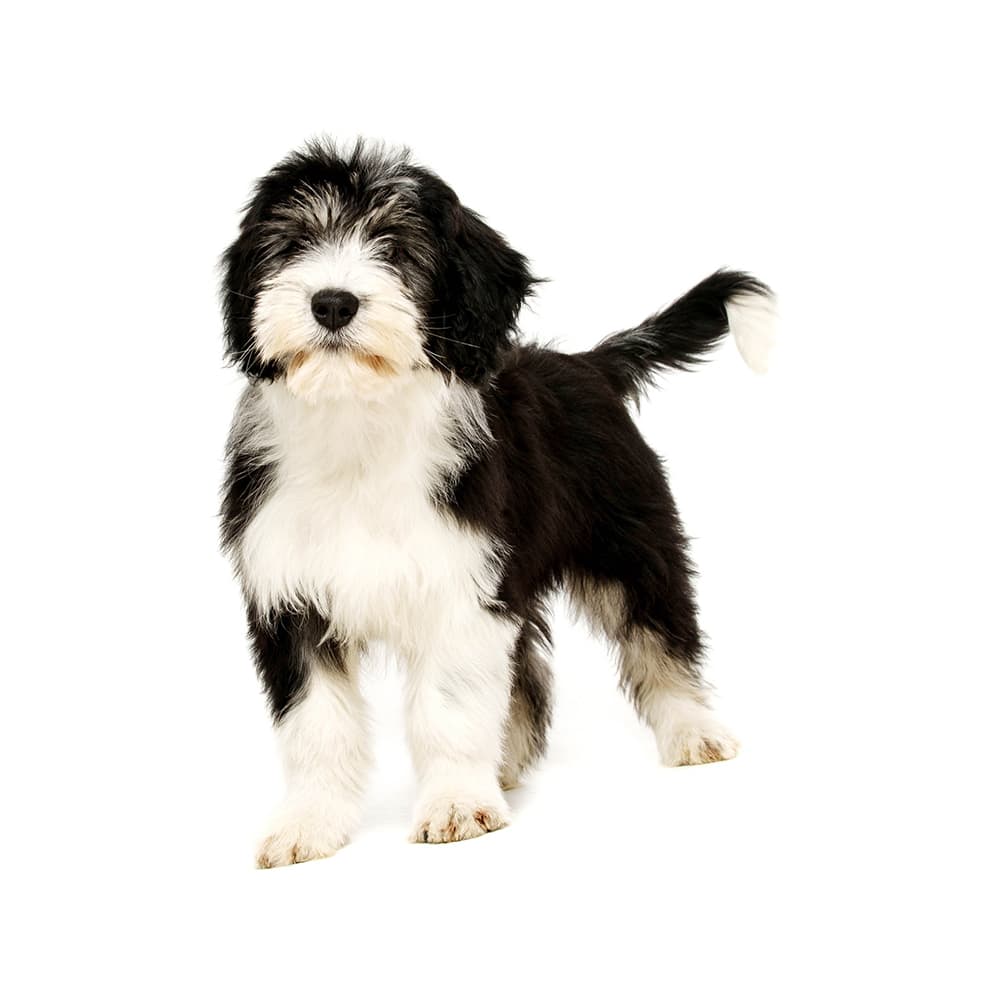Discover your dog's connection to this breed and 200+ others


Discover your dog's connection to this breed and 200+ others



The Polish Lowland Sheepdog, also known as the Polski Owczarek Nizinny or PON, is a medium-sized, robust, and well-muscled dog breed renowned for its shaggy, double coat, and adaptable, intelligent nature. The Polish Lowland Sheepdog's history extends back to the 13th century, although the specifics of its origin are not well documented. They are thought to descend from the Puli, a Hungarian herding dog, which, when crossed with local Polish dogs, led to the breed we know today. As their name suggests, they were originally bred for herding and guarding sheep in the lowland plains of Poland. Over the centuries, these dogs proved highly adaptable and robust, able to work in a variety of conditions. After World War II, the breed was almost extinct, but through the efforts of breeders, particularly Dr. Danuta Hryeniewicz and her dog Smok, the PON was brought back from the brink. Today, they're cherished as both working dogs and family pets around the world.
Polish Lowland Sheepdogs may suffer from atrioventricular heart block, hypothyroidism, neuronal ceroid lipofuscinosis, and patent ductus arteriosus. They may can also be affected by eye conditions such as cataracts, corneal dystrophy, persistent pupillary membranes, progressive retinal atrophy (central), and progressive retinal atrophy (rcd4). As a larger breed they are also at risk for developing orthopedic problems, such as hip and elbow dysplasia. Genetic testing is recommended, including for the following additional conditions: hyperuricosoria, degenerative myelopathy, and progressive rod-cone degeneration.
Polish Lowland Sheepdogs are known for their intelligence, loyalty, and vigilance. They're excellent problem solvers and can be a bit independent, a trait common among herding breeds. They're generally good with children and other pets when properly socialized, but they can be reserved with strangers. They're also known for their excellent memory – once a PON learns something, good or bad, they're likely to remember it.
A canine genetic lineage is a group of individuals or entire breeds that descended from common ancestors predating modern breed formation. Often these lineages are associated with a ‘type’ of dog with a unique historical working role and associated behaviors (e.g., herding, scent hunting, etc.).
Herding dogs are known for their high intelligence, trainability, and strong work ethic. These breeds originated in areas where managing livestock was an important part of daily life and had large pastoral lands. These breeds were specifically developed to help farmers and shepherds move, manage, and protect herds of livestock. Breeds within the herding dog lineage are agile and are known to have a natural herding instinct, where they like to keep their animals together. They are loyal and attentive to their handlers and are eager to please and are also highly aware of their environment. Many breeds within this linage have gone on to work as rescue and police dogs.
Example breeds with ancestry from this lineage include Border Collie, Cardigan Welsh Corgi, and German Shepherd.
The PON's coat is so dense that it's often hard to see their expressive eyes!
They're known for their unique "bear-like" shuffle when they move.
Their keen memory and intelligence can make them excellent at dog sports like obedience, agility, and herding events.
Despite their shaggy appearance, they're considered a low-shedding breed and can be a good choice for people with allergies.
One of the most striking features of the Polish Lowland Sheepdog is its dense, shaggy coat. They have a thick, double coat that is naturally waterproof and designed to keep them warm in harsh weather.
https://vgl.ucdavis.edu/breed/polish-lowland-sheepdog
https://www.akc.org/dog-breeds/polish-lowland-sheepdog/
https://www.ukcdogs.com/polish-owczarek-nizinny-poliski-owczarek-nizinny
https://www.fci.be/en/nomenclature/POLISH-LOWLAND-SHEEPDOG-251.html
Recommended by top vets with decades of experience
21 breeds
64 genetic health markers
50 genetic trait markers
